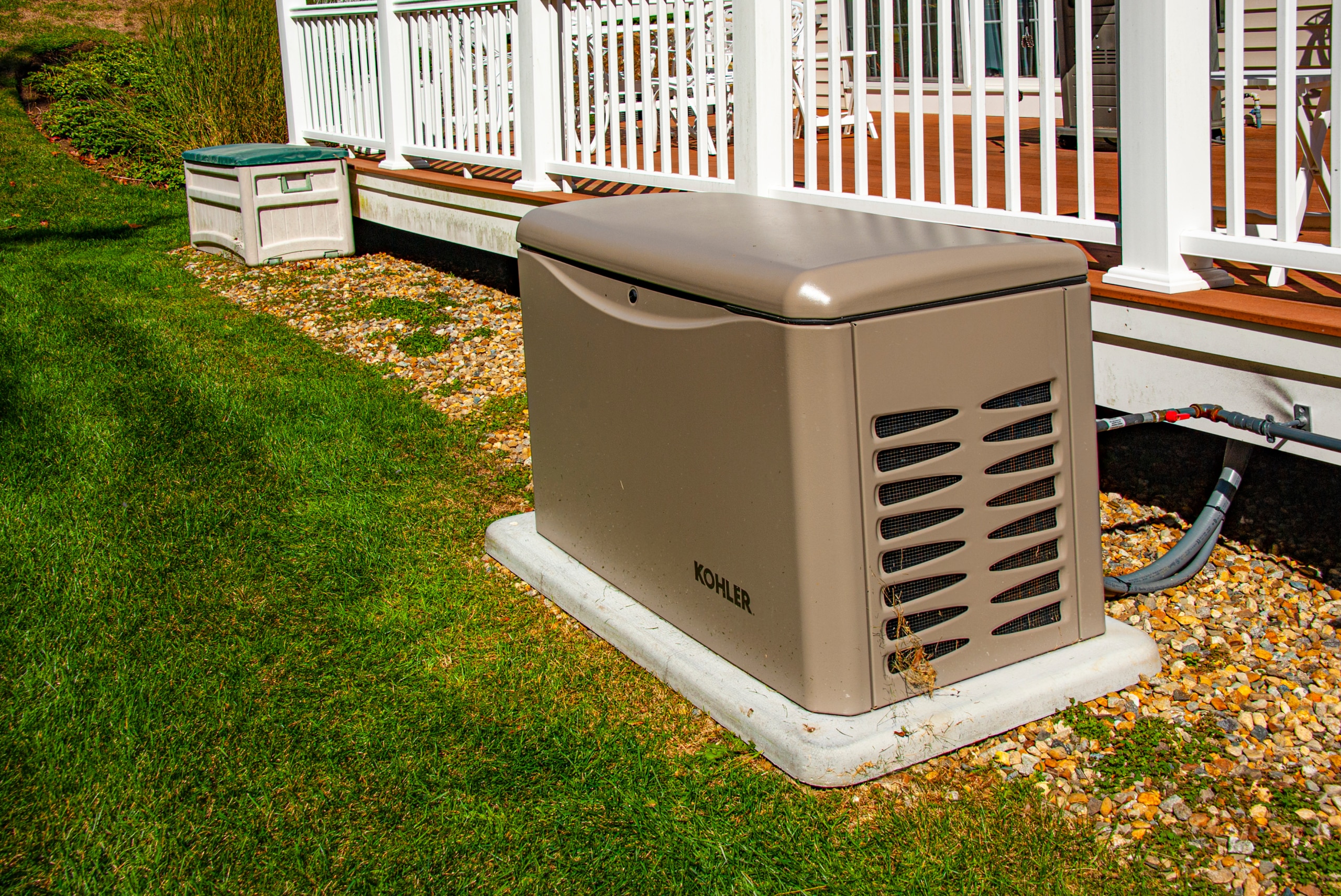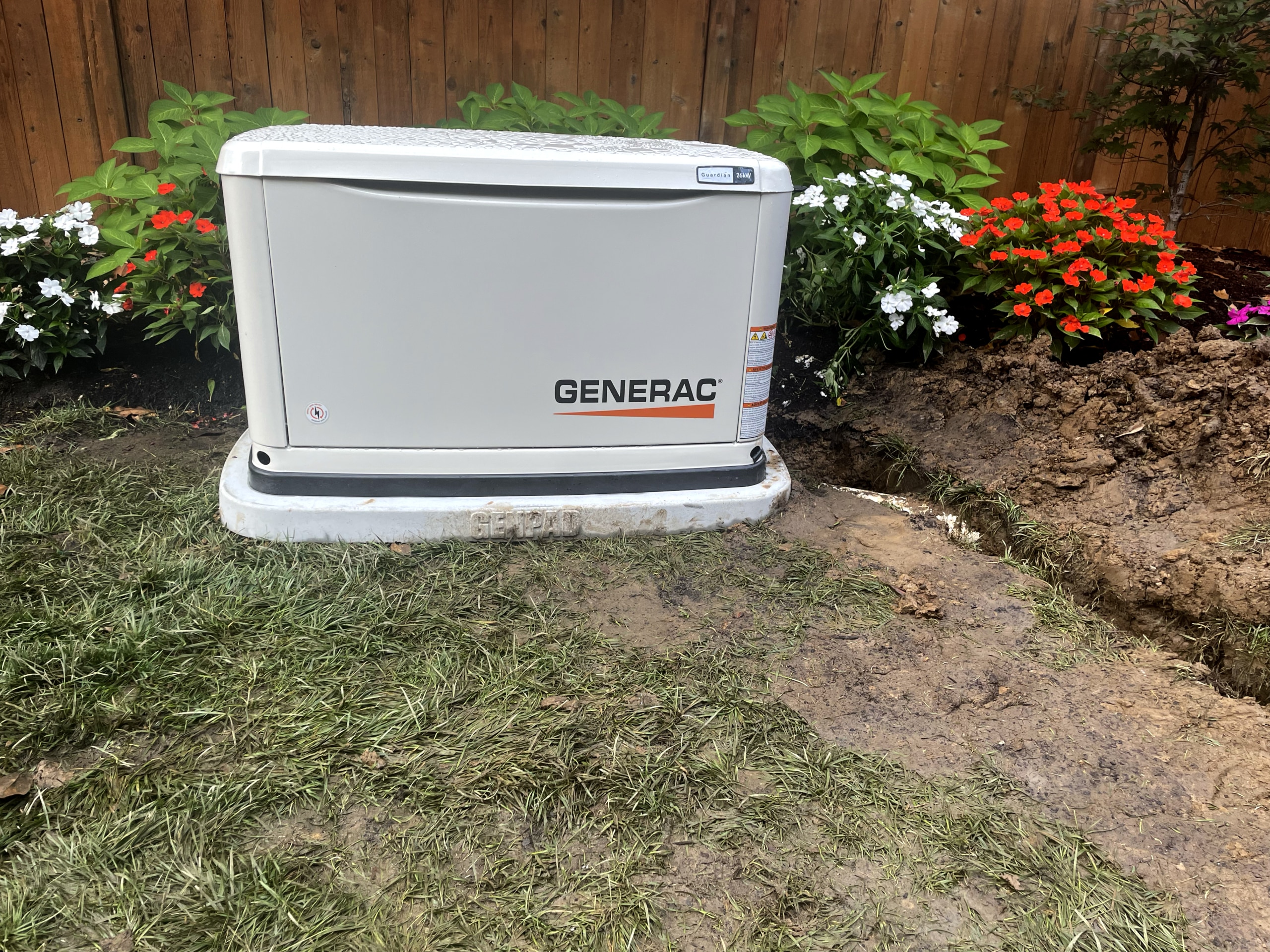During power failures, a backup generator turns a potentially daunting situation into a minor inconvenience. With rising power outages due to extreme weather, aged infrastructure, and grid overload,[1] essential services like lighting, refrigeration, heating, and internet become unavailable. Investing in a home generator ensures worry-free insurance, keeping your household safe, secure, and habitable during utility failures.
Table of Contents
- Why Choose a Generator for Home
- Types of Residential Generators
- Choosing the Correct Size Generators For Home
- Selecting the Best Fuel Source For Residential Generator
- Key Components and Features to Look for Home Generator
- Environmentally Conscious Choices for Home Generators
- Professional Installation: Making the Right Choice
- Ensuring Longevity: Routine Checks and Servicing
- Financing and Incentives
- FAQs
Why Choose a Generator for Home

Having a generator for your home provides critical backup power during outages to keep your home livable and prevent disruption. Whether from severe storms, heat waves, technical issues, or other grid disturbances, power failures can occur unexpectedly and last hours or even days. You may need air conditioning or heat, refrigeration, lights, internet, and other necessities with a generator as an alternate power source. Installing a quality home generator and keeping it well-maintained gives peace of mind that your family will have electricity for all the functions that make a house comfortable when the utilities fail. Choosing a generator wisely can be a handy safety net, providing reliable energy to ride out power outages safely
Types of Residential Generators
When selecting a backup generator, consider whether a permanently installed standby unit or portable model best suits your household needs.
Standby home generators offer the ultimate protection. Permanently wired into your home’s electrical system and connected to a natural gas or propane fuel source, they detect outages and switch on within seconds to restore power. With hands-free operation, larger electrical output, and unlimited run times, standbys provide whole-home coverage to keep essential systems like HVAC, major appliances, and more online for as long as grid power is interrupted. Upfront purchase and professional installation costs are more costly than portable models but provide automatic support.
Portable Generators: Flexibility and Convenience
Portable generators offer flexible, customizable electricity on demand without permanent installation. Available in various wattages and fueled by gas or diesel tanks, portables must be manually started when necessary, and devices must be plugged directly into outlets. Portables allow you to tailor backup power to priority circuits. Most residential models can run 4-8 hours on a full tank, with refueling needed for extended outages. Portable units require only outdoor extension cords and offer customizable partial home coverage with lower upfront costs than standby.
When determining generator needs, consider your budget, desired level of automation, whole versus partial home coverage, and installation constraints when deciding between standby generators or portable models for your residential property.
Choosing the Correct Size Generators For Home
Selecting a backup generator with adequate power capacity is crucial to effectively run your home’s essential devices and appliances during outages. Size your generator to handle startup surge demands and simultaneously power items without tripping breakers or damaging equipment.

Take note of the wattage requirements of the electrical systems you wish to backup.[2] Remember, items like fridges require 3-5x the listed watts during initial startup. Also, factor in critical circuits like lighting, heating, outlets, and other necessities you want to power.[3]
As a rule of thumb, plan for a generator capacity of around one-third of your home’s primary electrical panel service size. For example, if your home has a 200 amp service, choose home generator models in the 15,000-watt output range. Also, build in capacity for electric vehicle charging or appliance upgrades when sizing.
Don’t just factor in essentials, either. Determine which convenient extras like pool pumps, electric dryers, or WiFi routers you’d want to use during prolonged outages to maintain reasonable living standards before finalizing your optimal generator size. Leave potential expansion capacity, too. An adequately sized backup generator ensures you can continue running home systems that provide safety, security, and comfort when the grid power is out.
Selecting the Best Fuel Source For Residential Generator
Determining the best fuel source is an integral consideration when selecting a home backup generator. Most standby generators run on natural gas or liquid propane since they can be directly connected to existing home fuel lines. This allows hands-free, automatic operation without worrying about refueling. Natural gas is cleaner and more efficient. But propane self-stores outside, giving independence if gas lines fail. Consider existing home infrastructure and emergency prep when deciding between them.
For portable generators, gasoline is the most common fuel choice due to low costs and widespread availability. However, gas is volatile, emits fumes, and storage degrades over time. Diesel is more stable long-term, but availability is less universal, and costs are higher per gallon. Propane and natural gas portables exist, too, but require heavy, high-pressure tanks limiting runtime.
Evaluate generator weight, noise, output capacity, costs, and local accessibility when choosing fuel sources.
Key Components and Features to Look for Home Generator
Backup home generators are complex, with advanced components that enable reliable operation. Look for units with high-performance motors that provide clean, consistent power to run household systems without damage or disruption.

Look for generators with alternators made of pure copper. Copper windings last longer, generate less heat, and enhance the protection of sensitive electronics. Steel or aluminum enclosures withstand outdoor exposure while insulating operation noise. High-quality materials and craftsmanship ultimately reduce lifetime maintenance costs and downtime risk.
For standby units, ensure automatic transfer switches[4] safely manage the changeover between grid and generator power. Portables should have multiple outlet types, surge protectors, and overload prevention. Built-in fuel gauges and warning indicators also add convenience across generator types.
Environmentally Conscious Choices for Home Generators
With environmental sustainability at the forefront of public consciousness, more homeowners are considering the impacts of backup generator selection and usage. Seek out energy-efficient, low-emissions models powered by renewable-ready fuels.
Most standby home generators still rely on fossil fuels like natural gas or propane. But solar energy capabilities are expanding for supplemental charging to batteries, allowing limited overnight operation free of direct emissions when daylight is unavailable. Some portable models can also run on clean-burning biodiesel fuel.
Regardless of capability, turning off or unplugging nonessential devices to prevent wasted energy and prioritizing critical systems – minimizing nonessential electronics’ runtimes – can reduce environmental impacts.
Future generations of sustainable backup power options are on the horizon. But fuel selection and usage habits with current technologies can still limit your household’s carbon footprint.
Professional Installation: Making the Right Choice
Properly installing a home backup generator is critical yet complex, requiring specialized skills, tools, and materials. Seeking professional assistance can save homeowners time, frustration, hazards, and costs compared to tackling wiring, fuel system connections, and permits individually. Leave generator placement and hookups to the experts.
Reputable generator installation companies have extensive product familiarity across top brands. They expertly site units while considering aesthetics, utility access, and noise mitigation. Professionals also obtain all necessary permits. While upfront installation fees can seem high, especially for permanent standby generators, the long-term functionality and peace of mind are invaluable. Let experienced teams handle the heavy lifting to get your backup power running smoothly.
Ensuring Longevity: Routine Checks and Servicing
Establish regular maintenance habits to keep your backup generator functioning seamlessly. Follow manufacturer-recommended care schedules for inspections and component replacement. Basic upkeep is required after every 50-200 hours of operation, depending on the generator type and usage levels.
Routinely check fluid levels like motor oil and coolant to prevent mechanical issues. Replace air, oil, and fuel filters as particulates accumulate over time. Confirm batteries hold adequate charges and keep them on trickle chargers when not operating.For standby generators, routinely test automatic functionality by temporarily disengaging main electrical lines. Also, inspect exhaust systems, fuel line connections, and weather-protective housings annually.
Keep flammable debris, plants, and objects away from hot generator components. Ensure adequate airflow to avoid overheating.
While generators are designed for durable operation through storms and outages, proper care maximizes their longevity and reliability. Consult technician manuals and consider preventative maintenance with the help of electrical contractors to optimize your unit’s lifecycle. Consistent generator upkeep gives confidence that your generator will crank unfailingly whenever household power fails.
Financing and Incentives For Home Backup Generators
Investing in a reliable home backup generator may have a substantial upfront cost, but various financing plans and incentives can offset expenses, ensuring affordable access to emergency power. Check for utility rebates, local grants, and federal tax credits for renewable energy systems[5]. Utilize promoted financing offers, rebates, and tax incentives in your area to make backup generators more affordable, protecting your home from weather risks. Consider the Inflation Reduction Act[6] for additional financial benefits, providing tax relief and subsidies for essential upgrades, including home generators, contributing to a more accessible and sustainable energy future.
Common FAQ’s About Choosing a Generator
Audit essential electrical loads and choose a reliable, professional-installed model adequately sized to support those systems.
Size your generator to approximately one-third of your main electrical service panel capacity to run necessary loads.
Sufficiently sized standby generators can power whole homes, while portables handle partial coverage.
Standby generators offer automatic whole-home coverage, while portable units provide manual, customizable partial home electricity.
Tally all essential appliances’ listed wattages, multiplying motor-driven units by 3-5 times to cover startup surges.

